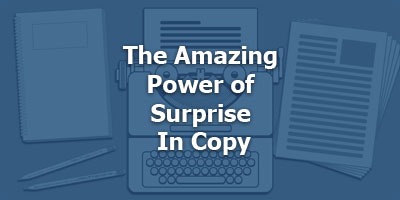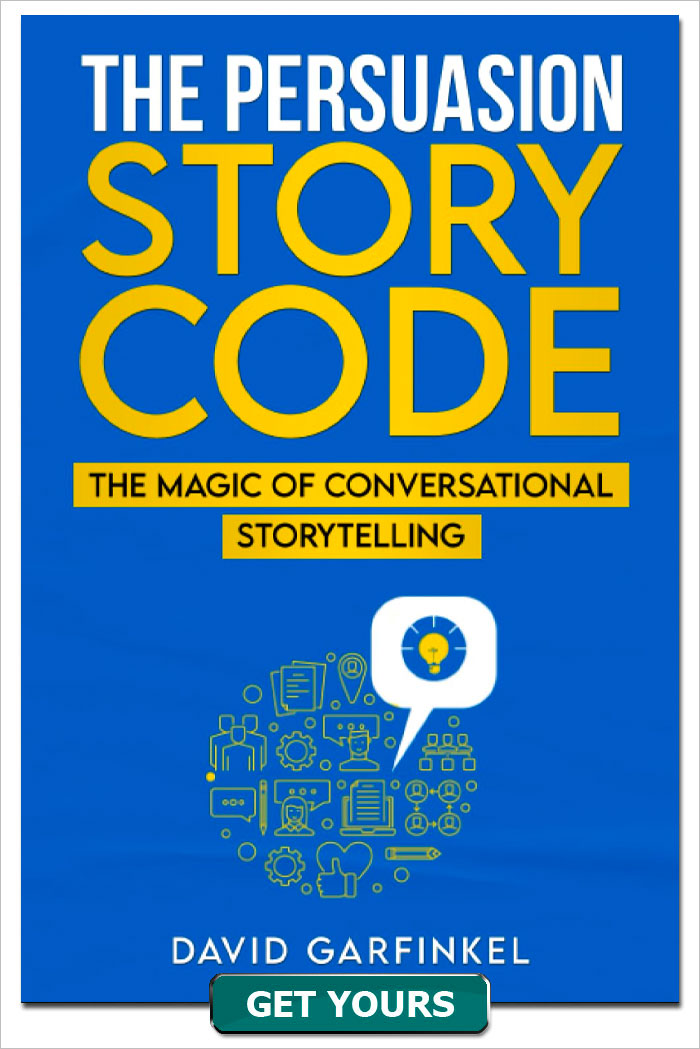Episode 058 - The Amazing Power of Surprise In Copy
Published by: David Garfinkel on 05-28-2018
Tweet
Surprise is the “magic excitement dust” of entertainment
- Music
“High Time,” Grateful Dead. Circa 1970.
Very touching country-rock kind of song about a misunderstanding that ended a relationship, and all the self-doubt that followed. Melancholy. Goes where you wouldn’t expect: surprise.
Vs. my rewrite (Corny AF)
“You said goodbye and held me tight
You know I found it heartwarming
Yeah, sure, I’ll miss you tonight
But I’ll see you in the morning.” : not that surprising
Beatles – used a lot of harmonic surprises, putting in a different chord/progression than would be expected. Lennon/McCartney have more #1 hits in history 100 than anyone else. Period.
- Same thing in movies, TV and fiction
Car chase – A screenwriter has to review all car chases ever done before to do something different, and unexpected: surprise
Ending of a thriller or a mystery – for most people, not what they expected (although very clever people can sometimes figure it out): surprise
What about copywriting?
We’re not looking to create entertainment the same way a songwriter or a screenwriter is.
But on the other hand, we don’t want our copy to be boring.
Why surprise works to be entertaining:
People have, generally, humdrum lives.
Here’s how surprise breaks the “humdrum” cycle:
- When surprise is exciting, inspiring, leading to hope: Influx of brain chemicals like dopamine, serotonin and oxytocin – feels good
- When surprise is scary, sad, angering: Influx of brain chemicals like adrenaline and cortisol
Effective in either case because, people like to be nudged out of their humdrum lives.
And as copywriters, we need to stimulate emotion in our prospects in order to make them receptive to taking action – i.e., buying.
So how do we use surprise in copywriting?
1) Surprising new offer / headline / product
From last episode: Joe Sugarman – laser beam digital watch
“Never press another button, day or night, with America’s first digital watch that glows in the dark.”
In 1976, this is quite a surprise. Today, it’s no big deal. But we have to look at copy in the perspective on when it was used.
2) Unique verbs – from John Carlton
John likes to use colorful verbs. Cram. Stun. Maim. Crush. Coax.
He has a rule that is hard to follow but well worth it if you can do it skillfully: Never use the same verb more than once in a piece of copy.
One exception: Don’t put in a lot of synonyms for “said.” It doesn’t sound natural or conversational when you say things like, “He elocuted,” or “She intoned.” It sounds contrived. “Said” and “Asked” are usually all you want to use.
3) Imaginative but easy-to-grasp metaphors and comparisons in stories and bullets. Stuff people don’t expect.
Exciting, unexpected images – but nothing too hard to grasp.
Smooth as a northern lake on a windless day
As excited as a chipmunk who’s just broken into the almond processing plant
Making more money than the pharmacist who’s running a meth lab on the side.
4) Surprising pricing / terms.
Gary Halbert story – Guthy-Renker – don’t pay for 30 days – tripled response.
5) Surprising bonus!
My friend Doberman Dan is really good at this. When you join his membership group, he sends a special gold-colored coin with a custom insignia on it. Recently he sent out a USB thumb drive in the shape of a knight, complete with sword! Which is appropriate for his group, because it’s called “Marketing Camelot-Knights of the Round Table.”
Recap: Why surprise works (keeps the brain guessing, entertained … another way of generating emotion)
Caution – don’t let your inventiveness take over the sales argument, which is the most important thing in copy. Surprise is the seasoning,
not the main course.
Keywords: shocking copywriting techniques









